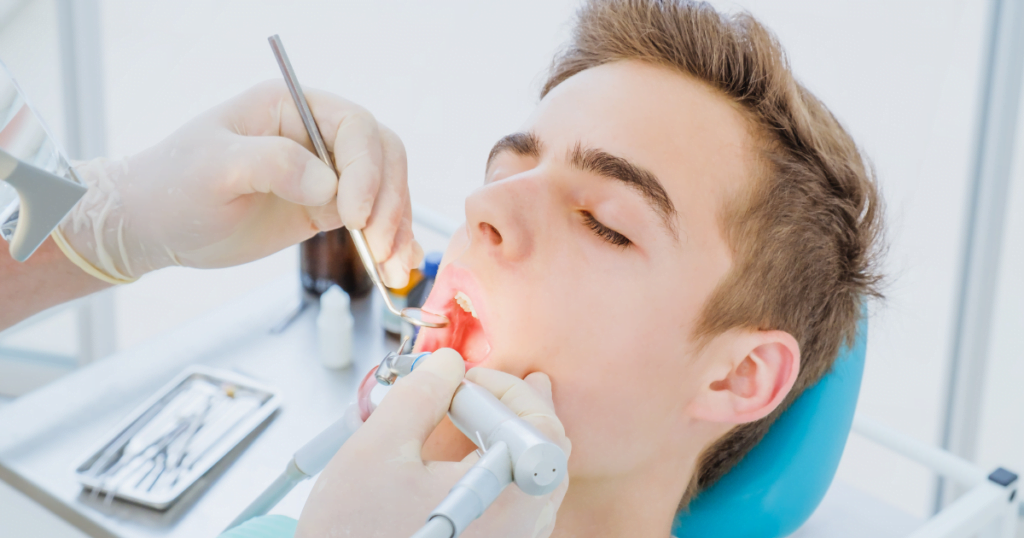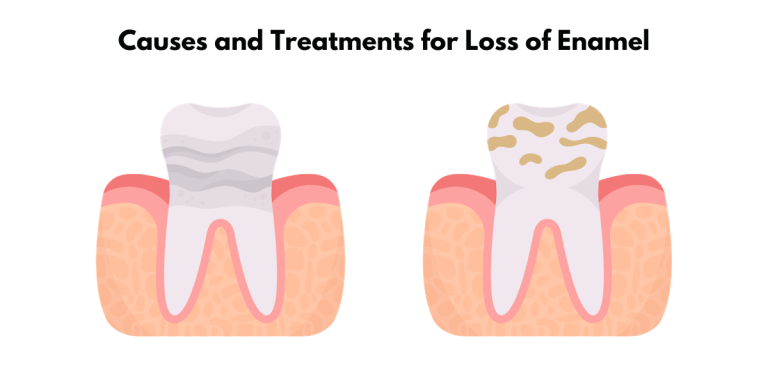Access to Dental Advice: How to Avoid Needing a Root Canal
What is a root canal?
A root canal is an endodontic treatment that helps treat unhealthy tissues of the dental pulp. It is a dental procedure that removes the infected or inflamed pulp of a tooth to save it from further infections, relieve pain and prevent reinfection.
The inside of the tooth is cleaned and disinfected, then filled with a paste or other synthetic material like gutta-percha and sealed with a crown or filling. Root canal therapy has a false reputation for being painful. However, modern procedures are much less uncomfortable than before.
Root canals can be carried out by general dentists or an endodontist who has gone to multiple years of specialty training after dental school to focus exclusively on root canal treatments.

The causes of tooth pain
Tooth pain is one of the most common types of pain. Several factors, including infection, decay, and injury, can cause it.
We will explore some of the most common causes of tooth pain. We will also provide tips on relieving your discomfort and avoiding future problems.
Infection or inflammation
Infection or inflammation in the teeth can be caused by several factors, including:
- deep cavities or fillings
- leaking filling
- complications from large fillings
- other serious injuries to the tooth
- trauma to the face.
Damaged or broken tooth
The cause of tooth pain when a damaged or broken tooth is present can be attributed to injury to the tooth, such as:
- a blow to the jaw
- multiple dental procedures to the same tooth
- extensive decay from an untreated cavity
- a crack or chip in the tooth
- faulty or damaged crowns
- deep decay
- large fillings
- a leaking filling
- or another serious injury to the tooth
All of these can allow bacteria to enter the pulp and cause infection and inflammation, resulting in symptoms such as swelling or tenderness in the surrounding gums, tooth or gum discoloration, sensitivity or pain to hot or cold temperatures, even after exposure, severe tooth pain with pressure or chewing, bone loss around the end of the root, a hole in the side of the tooth that allows drainage from the root into the gums or through the cheek, and swelling in other parts of the face, head, or neck. If left untreated, the infection could spread to surrounding gum tissue or bone, resulting in tooth loss.
Fractured crown
A fractured crown is a dental crown that has become cracked or broken. It can cause tooth pain due to the exposed inner structures of the tooth, such as the nerve, becoming irritated and inflamed.
The most common cause of a fractured crown is excessive chewing or biting on the tooth, which can be caused by not protecting the tooth with a crown or filling after root canal treatment.
Other causes of a fractured crown include weakened enamel due to age or decay and the use of hard objects such as ice or hard candy. If a crown is cracked or broken, it should be replaced as soon as possible to prevent further damage or infection.
Splinting teeth
The cause of tooth splinting pain is often due to infection and inflammation resulting from tooth decay, gum disease, or a dental injury. To relieve this pain, a dentist may recommend root canal therapy, where the infected pulp is removed, and the root canals are disinfected and filled with a special sealant to protect the tooth from further damage.
This treatment may also involve placing a splint around the affected tooth to give it extra support while healing. Other treatments may include bonding, crowns, fillings, and dental implants to help restore the tooth. Additionally, brushing your teeth with fluoride toothpaste and flossing regularly to help prevent decay and gum disease can help reduce the risk of tooth splinting pain.
Poor oral hygiene
Poor oral hygiene is the lack of proper care to keep the mouth, teeth, and gums in good health. It can lead to health problems such as tooth decay, gum disease, and bad breath. Poor oral hygiene can cause tooth pain, sensitivity, and infection.
The most common cause of poor oral hygiene is the accumulation of plaque. Plaque is a sticky film of bacteria that forms on the teeth and causes tooth decay and other dental problems. It can also irritate gums, causing gum disease and inflammation. Plaque builds up when food, bacteria, and saliva mix in the mouth, and if it is not removed regularly, it can lead to tooth decay.
Poor oral hygiene can also be caused by other factors such as inadequate brushing and flossing, poor diet, smoking, skipping dental appointments, and certain medical conditions. Maintaining good oral hygiene habits, including brushing and flossing, using fluoride toothpaste, avoiding sugary snacks and drinks, seeing your dentist for regular check-ups and cleanings, and avoiding tobacco products. Doing so will help reduce the risk of toothache and other dental problems.
Poor diet
A poor diet is a diet that does not contain sufficient nutrients to sustain good health. The primary causes of a poor diet are lack of access to nutritious food, lack of nutrition knowledge, and lack of motivation to make healthy food choices.
A poor diet can also result from excessive sugar consumption, unhealthy fats, and processed foods. Other causes include skipping meals, eating fast food, relying on convenience, and turning to comfort foods to cope with stress or boredom.
Additionally, alcohol consumption and smoking can reduce the body’s ability to absorb nutrients. These lifestyle choices can contribute to poor nutrition and a poor diet.

What are the symptoms of needing a root canal?
Root canals are common procedures that are usually not painful. Most people report feeling little to no discomfort during or after the procedure.
However, some symptoms may indicate you need a root canal:
Pain when biting or chewing
The pain when biting or chewing can range from mild to severe and can be localized to the affected tooth. It may get worse only when you bite down on the tooth, or it could be persistent throughout the day.
Some people experience prolonged sensitivity to hot food or liquids. You may also experience tenderness and swelling in the gums near the affected tooth.
Pain when drinking cold or hot liquids
The pain associated with drinking hot or cold liquids when needing a root canal can range from mild to severe. It may lessen or intensify throughout the day or get worse only when you bite down on the tooth.
Other symptoms of needing a root canal include severe tooth pain when eating or when you put pressure on the area, prolonged sensitivity to hot or cold temperatures (even after the hot or cold stimuli has been removed), a small pimple-like bump on the gums near the area of teeth pain, discoloration (darkening) of the tooth, tenderness or swelling in nearby gums, and sometimes no symptoms are present.
Toothache
A toothache is a common symptom indicating the need for a root canal. It is usually characterized by a throbbing pain in the tooth and surrounding area that may be accompanied by sensitivity to hot and cold temperatures. Other symptoms of needing a root canal include swelling or tenderness in the gums, discoloration of the tooth or gums, sensitivity or pain with pressure or chewing, and severe tooth pain with pressure or chewing.
Swelling around the tooth
The symptoms of swelling around a tooth due to a need for a root canal include:
- tooth or gum discoloration
- sensitivity or pain to hot or cold temperatures even after exposure
- severe tooth pain with pressure or chewing
- bone loss around the end of the root
- a hole in the side of the tooth that allows drainage
- swelling in other parts of the face, head, or neck
- infection that spreads to surrounding gum tissue or bone
- swelling or tenderness in the surrounding gums
- tooth loss
If these symptoms are present, it is important to contact a dentist immediately to confirm the need for a root canal.
Bad taste in the mouth
If you have a bad taste in your mouth, it could signify that you need a root canal. This is because when the pulp of your tooth becomes infected, it can cause an unpleasant taste.
Other symptoms of an infected tooth include pain, swelling, and sensitivity to hot or cold temperatures. If you are experiencing any of these symptoms, it is important to see a dentist right away.
Difficulty swallowing
If you’re having difficulty swallowing, it could be a sign that you need a root canal. When the nerves in your teeth become infected, they can cause pain and swelling. This can make it difficult to swallow and cause other symptoms like fever and headache. If you’re experiencing these symptoms, you must see a dentist immediately.
Facial swelling
Fac swelling is one of the most common symptoms of needing a root canal. This can happen if the infection from the tooth has spread to the surrounding tissue.
The swelling may be accompanied by pain, redness, and warmth. If you have any of these symptoms, you should see a dentist as soon as possible.
Nausea
The symptoms of nausea associated with a root canal may include nausea or dizziness, an upset stomach, excessive salivation, stomach pain, sweating, and a feeling of faintness.
Vomiting
In some cases, the pain from the root canal may be so severe that it leads to vomiting. Other possible symptoms of a root canal may include sensitivity to hot and cold, swelling of the gums, and discomfort when biting down.
Toothache that does not go away
If you have a toothache that does not go away, it could be a sign that you need a root canal. Make sure to visit your dental care practitioner to check it immediately.

How is a root canal performed?
A root canal procedure is a common dental procedure to treat an infected or damaged tooth. Here is a step-by-step guide on how it is performed:
- X-rays and exam: The dentist or endodontist will take a new set of x-rays and perform a physical exam to determine the best location to remove the infected tissue.
- Numbing: You will receive full local anesthesia to numb the tooth and surrounding area. This is more than what is required for a filling. You may also be given sedation if you are anxious.
- Rubber dam: A sheet of latex called a rubber dam will be placed over your mouth to prevent any bacteria from entering the tooth and to stop any medications from being swallowed.
- Opening: An opening will be drilled into the top of your tooth.
- Cleaning and shaping: Your dentist will use refined drills and files to remove the inflamed or infected pulp and carefully clean and shape the inside of the tooth.
- Irrigation: The main pulp chambers will be rinsed with water and, in most cases, an antibacterial agent to eliminate any remaining bacteria.
- Filling: The dentist will fill and seal the tooth, so it is closed off to infection. This is usually done with a biocompatible filling material called gutta-percha, combined with rubber cement. A temporary filling will be placed until you get a permanent crown.
- Posts: In some cases, posts will be inserted inside the tooth during the filling process.
After the root canal procedure is complete, you can drive home if you have only been given local anesthesia. You may experience minor pain and soreness as you recover, but the procedure should not be painful.
FAQs
Here are some of the most frequently asked questions about root canals:
How do you know if you need a root canal?
There are a few ways to tell if you need a root canal. If you have severe tooth pain that doesn’t go away with over-the-counter pain medication, you likely have an infection that requires treatment. You may also notice that your tooth is sensitive to hot or cold temperatures or has become discolored. If you experience any of these symptoms, it’s important to see a dentist right away so that they can determine whether or not you need a root canal.
What not to do before a root canal?
- Do not smoke for several days before your root canal appointment; avoid smoking altogether if you can.
- Do not chew hard, crunchy, hot, or spicy foods/drinks or any foods with a sharp edge (like sourdough bread), for 1-2 days before the procedure.
- Do not drink alcohol for 1-2 days before the procedure.
- Do not bite or chew on the treated tooth until a permanent crown has been placed.
- Do not eat for a few hours after the procedure, until the numbness in your mouth wears off.
What not to do after a root canal?
- Avoid hard or crunchy foods that require a lot of chewing.
- Do not use mouthwash with alcohol in it.
- Do not take aspirin for pain relief as this can increase bleeding.
How long does a root canal take?
A root canal procedure typically takes between 30 and 90 minutes per visit and can usually be completed in 1 or 2 visits. The number of visits required depends on the severity of the infection, the size and number of roots, and the provider’s preference.
Before the root canal, the dentist will take an X-ray of the root and perform a pulp vitality test to confirm that the tooth requires root canal treatment. They will then numb the tooth with local anesthesia and place a rubber dam over it.
Do root canals hurt the next day?
Yes, a root canal can cause discomfort or mild pain the day after the procedure. This is due to normal tissue inflammation and can be managed with over-the-counter pain relievers.
Most patients experience increased sensitivity for two to three days after the procedure and may have pain when biting down or when their tooth is exposed to hot or cold temperatures. This is usually temporary, and side effects should lessen within one to two weeks.
Are there any alternatives to a root canal?
The main alternative to a root canal is tooth extraction, with potential prosthetic replacements such as a dental implant, fixed partial denture (bridge), or removable denture. Saving the natural tooth is usually the best option, so root canal treatment is usually the choice.
However, alternatives such as dental fillings, extraction with dental restoration, and regenerative endodontics may also be considered depending on the individual case. A root canal is typically a less expensive and successful option with a mild recovery time and pain. Still, it comes with some risks, such as the possibility of leaving behind bacteria and systemic disease.







